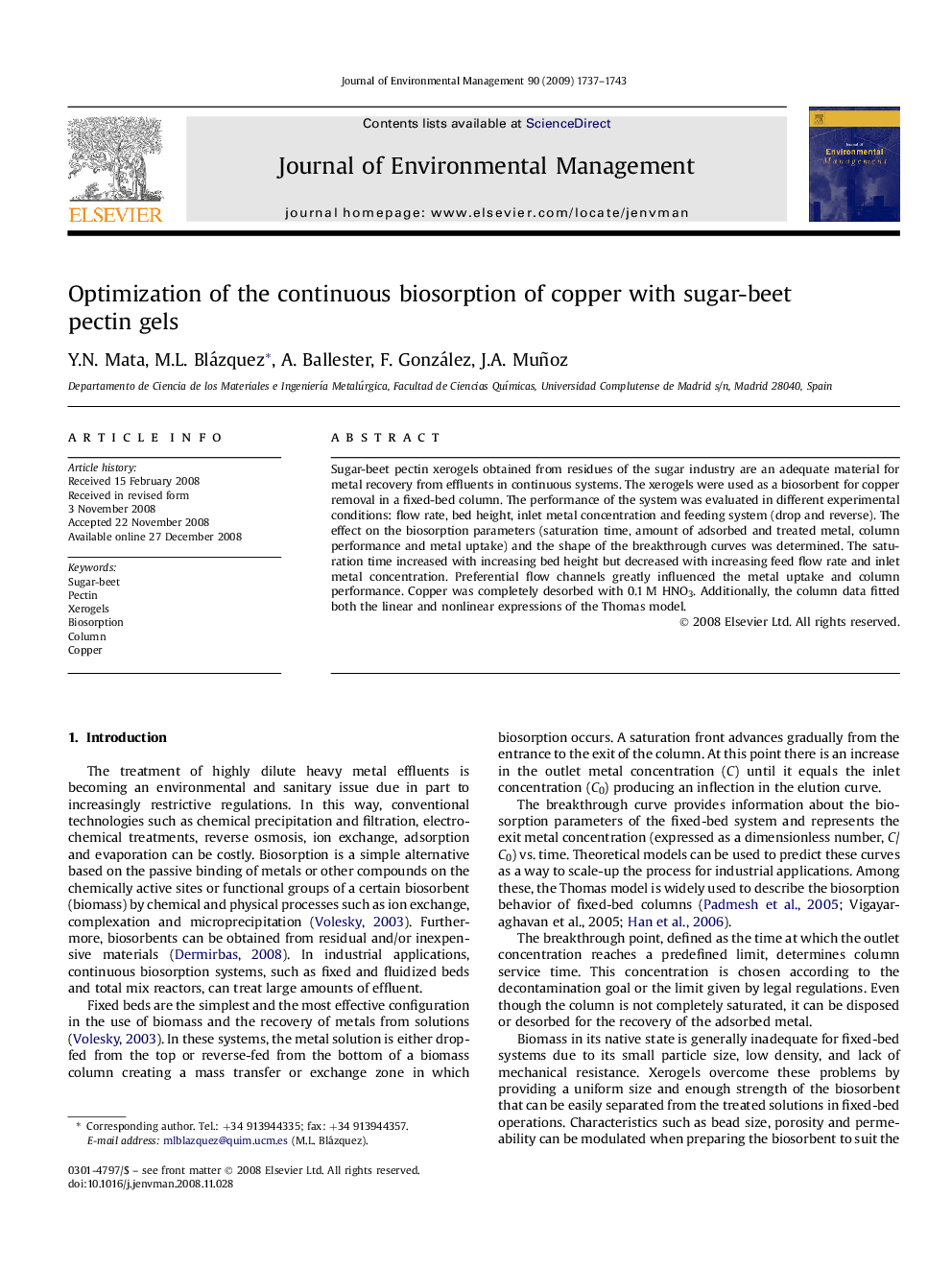| Article ID | Journal | Published Year | Pages | File Type |
|---|---|---|---|---|
| 1057364 | Journal of Environmental Management | 2009 | 7 Pages |
Sugar-beet pectin xerogels obtained from residues of the sugar industry are an adequate material for metal recovery from effluents in continuous systems. The xerogels were used as a biosorbent for copper removal in a fixed-bed column. The performance of the system was evaluated in different experimental conditions: flow rate, bed height, inlet metal concentration and feeding system (drop and reverse). The effect on the biosorption parameters (saturation time, amount of adsorbed and treated metal, column performance and metal uptake) and the shape of the breakthrough curves was determined. The saturation time increased with increasing bed height but decreased with increasing feed flow rate and inlet metal concentration. Preferential flow channels greatly influenced the metal uptake and column performance. Copper was completely desorbed with 0.1 M HNO3. Additionally, the column data fitted both the linear and nonlinear expressions of the Thomas model.
